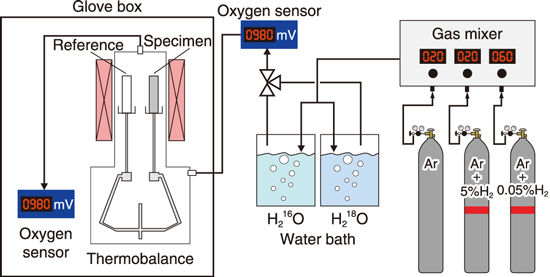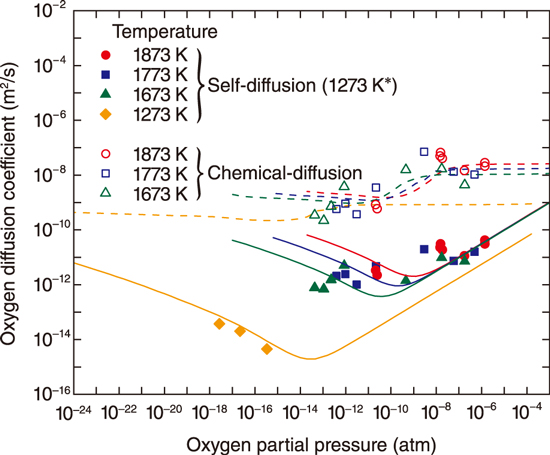
Fig.7-10 Schematic diagram of experimental setup

Fig.7-11 Experimental and calculated oxygen diffusion coefficients
In mixed oxide (MOX) fuels used in fast reactors, the diffusion of uranium (U), plutonium (Pu), and oxygen (O), which are the constituent elements of the MOX fuels, is closely involved in important phenomena such as redox reactions, sintering, and element migration during irradiation. Hence, it is essential to measure and evaluate the diffusion coefficient. However, despite its importance, the experimental data of the oxygen diffusion coefficient of the MOX fuels are very limited because of the following measurement problems. The measurement procedure adopted in the tracer method, which is a general method used for measuring the diffusion coefficient, is complicated, and it is difficult to measure the coefficient directly during the diffusion process and to maintain the oxygen-to-metal ratio (O/M) of the MOX fuel.
We developed a new experimental method using oxygen-isotope water (H218O) with a high concentration of oxygen isotope (18O) for expanding the data of the oxygen diffusion coefficient of MOX fuel. Fig.7-10 shows a schematic diagram of the experimental setup. In this method, the oxygen self-diffusion coefficient is calculated by continuously measuring the slight change in weight when the 16O in the specimen is replaced by 18O derived from oxygen-isotope water using a thermobalance and by analyzing the rate of weight change. The amount of 18O in the atmosphere can be controlled by the H2-H2O equilibrium reaction, thereby enabling measurement while maintaining the O/M ratio. This method is simpler than the tracer method, and it enables obtaining the oxygen self-diffusion coefficient of MOX fuel with the stoichiometric composition.
The temperature dependence of the oxygen self-diffusion coefficient was clarified from the experimental data obtained by this method over a wide range of temperatures. The migration energy of oxygen defects was successfully determined. Furthermore, the relationship between the oxygen-defect concentration and the diffusion coefficient was evaluated by combining these data with thermodynamic data. Fig.7-11 shows the experimental and calculated oxygen diffusion coefficients. The chemical diffusion shown in this figure is defined as diffusion with a concentration distribution in the sample. The calculated oxygen diffusion coefficients are in good agreement with the experimental and literature data. The results also show good agreement of the calculated values with the data for different Pu contents.
The results obtained in this study make it possible to predict the time required for sintering and redox reactions of MOX fuel and the time variation of oxygen retribution during irradiation. Thus, these results will contribute to further developing fast reactor fuel technology-such as the optimization of the MOX fuel fabrication process and improvement of fuel irradiation behavior analysis codes.
(Masashi Watanabe)
* Vauchy, R. et al., Oxygen Self-Diffusion in Polycrystalline Uranium-Plutonium Mixed Oxide U0.55Pu0.45O2, Journal of Nuclear Materials, vol.467, part 2, 2015, p.886-893.